#Francis Glebas
Explore tagged Tumblr posts
Text











Treasure Planet by Francis Glebas #1
85 notes
·
View notes
Text

#movies#polls#fantasia 2000#fantasia#90s movies#james algar#gaëtan brizzi#hendel butoy#eric goldberg#pixote hunt#paul brizzi#francis glebas#don hahn#walt disney pictures#disney#requested#have you seen this movie poll
176 notes
·
View notes
Text




by Francis Glebas
#Francis Glebas#concept art#treasure planet#treasure planet 2002#disney#disneyedit#disney edit#capturingdisney#*
912 notes
·
View notes
Text





Storyboards for the cosmic storm sequence by Francis Glebas. Source: Francis Glebas's Weebly
32 notes
·
View notes
Text


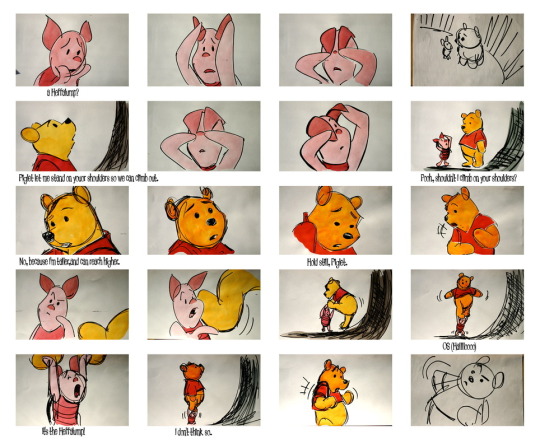

An early storyboarded sequence done by director Francis Glebas for Piglet's Big Movie (2003), in which Pooh and Piglet search for Small and get stuck in a heffalump trap
21 notes
·
View notes
Photo


#Aladdin 1992#Aladdin#Disney#Valentines#Ron Clements#John Musker#Ted Elliott#Terry Rossio#Burny Mattinson#Roger Allers#Daan Jippes#Kevin Harkey#Sue C. Nichols#Francis Glebas#Darrell Rooney#Larry Leker#James Fujii#Kirk Hanson#Kevin Lima#Rebecca Rees#David S. Smith#Chris Sanders#Brian Pimental#Patrick A. Ventura#90s
35 notes
·
View notes
Text

Fantasia 2000 (1999) dir. James Algar, Eric Goldberg, Pixote Hunt, Hendel Butoy, Don Hahn, Francis Glebas, Gaëtan Brizzi, Paul Brizzi. 7.7/10
I would recommend this movie to my friends. I would rewatch this movie.
Omg Steve Martin, I forgot.
Disney really be wilding for having this kinda movie as a concept. We just love art, don't we? This really is revolutionary though in my opinion. Little me was just entertainined. Current me is like this is art. This really be taking me back to my childhood. I really enjoyed the New York City one. What I like is how whimsical this is. And it's like made by adults. I love how cute Mickey is and how in love Donald is.
I really had to focus on this, because my attention span was not having it. Little me was better.
I never thought that Noah's Ark was gonna be that ginormous. I just thought, ain't no way Noah's Ark can hold all these animals.
#fantasia 2000#1999#James Algar#Eric Goldberg#Pixote Hunt#Hendel Butoy#Don Hahn#Francis Glebas#Gaëtan Brizzi#Paul Brizzi#animation#movie#film#review#commentary#rye-views#7.7#fantasia
2 notes
·
View notes
Text
Cinderella and the Secret Prince (2018)
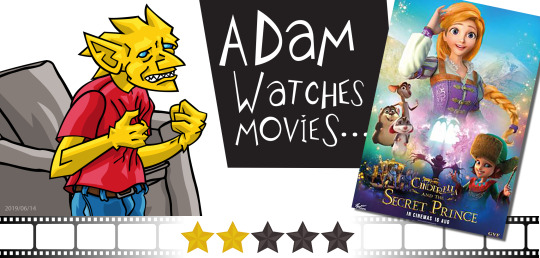
While I didn't enjoy this film, that doesn't mean you won't. No matter what I say, the people involved in this project did it: they actually made a movie. That's something to be applauded. With that established...
There's something particularly devastating about watching a bad movie that could’ve been good if circumstances beyond the filmmaker’s control hadn’t mucked things up. Right before the end credits of Cinderella and the Hidden Prince, we see concept art of what the characters should’ve looked like. They look great. As good as anything Disney has put on-screen. I'm certain the voice actors saw these images and got all excited. I can picture the art director/character designer telling their friends and family about this animated fairy tale they were working on and then dying of shame once they saw the final product.
Ella “Cinderella” (voiced by Cassandra Morris) is forced by her wicked stepmother and step-sisters to work as a scullery maid in her own home. When her mouse friends Alex (Chris Niosi), Manny (R. Martin Klein) and Walt (Tony Azzolino) discover an apprentice fairy godmother in the woods (Crystal, voiced by Kirsten Day), Ella gets the chance to go to the royal ball and meets the kingdom's prince. Unfortunately, Olaf (Stephen Mendel) isn’t a prince at all. He’s a puppet of the Wicked Witch (Stephanie Sanditz), who has transformed the real prince into a mouse!
If you’ve had the misfortune of seeing 2012’s Cinderella 3D, this one’s cut from the same cloth. Ugly characters are REALLY ugly but not in an intentional way. The "handsome" prince has his eyes set just a bit too far apart, making him look like he’s a fish man. Cinderella’s mouse friends (well, two are mice, one’s a hamster) are hideous creatures whose size changes from scene to scene. At best, this looks like a bargain-bin knockoff of Tangled. Most of the time, it doesn’t even reach the level of Happily N’Ever After. Some assets were obviously taken from an animation library because you can see their cycles end in the middle of a scene.
Despite the lackluster visuals, you can picture the movie this could've been if it weren’t trying to tell the Cinderella story. When you think of the classic fairy tale, certain elements come to mind: a poor girl forced to do labor, a fairy godmother and most iconic of all… a crystal slipper left behind at midnight. That last one? not in this movie! Instead, we have a quest for a magic ring to restore the not-so-secret prince to his human form. This mission takes over the entire film, which would be fine if it was what we’d signed up for.
As Hoodwinked has taught us, all could've been forgiven if the writing had done some heavy lifting. At several points, it feels like there are scenes missing. One moment, Cinderella and her friends spot a colossal ice mountain all the way across the forest. Seconds later, they’re inside, exploring a cave that looks like it belongs to a completely different film. The characters are thin, unlikeable, or both. At several points, the story contradicts itself. We learn, for example, that the prince was turned into a mouse when he was five years old. When he’s restored to his true form, he suddenly knows how to ride a horse and is an expert swordsman. Did he master these skills when he was a toddler? Then there’s a reveal about the evil witch that makes no sense and an epic conclusion that raises far too many questions. It’s clear some people on the team were trying but they were outnumbered by people who just didn’t care.
You can appreciate a film wanting to take a familiar story in a new, fresh direction but good intentions don't mean anything if the end product is kind of ugly, often annoying and poorly written. Don’t get me started on the one musical number. It’s so bland and generic you'll forget the lyrics as soon as the following line begins. Even for little kids who don’t discriminate, Cinderella and the Secret Prince would be a hard sell. (May 7, 2021)
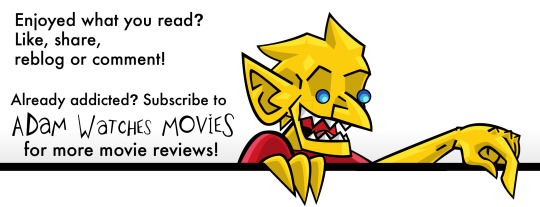
#cinderella and the secret prince#movies#films#movie reviews#film reviews#cinderella#lynne southerland#francis glebas#alice blehart#stephanie bursill#russell fung#Cassandra Morris#Tony Azzolino#Chris Niosi#R. Martin Klein#Kirsten Day#2018 movies#2018 films
2 notes
·
View notes
Photo

5/23/23
FANTASIA 2000, directed by James Algar and Don Hahn and Gaetan Brizzi and Eric Goldberg and Hendel Butoy and Francis Glebas and Pixote Hunt, 1999.
#fantasia 2000#james algar#don hahn#gaetan brizzi#eric goldberg#hendel butoy#francis glebas#pixote hunt#1999
3 notes
·
View notes
Text
Fantasia 2000
Benvenuti o bentornati sul nostro blog. Nello scorso articolo abbiamo deciso di parlare di un’opera tratta da una storia vera, una storia incentrata su un serial killer spietato e che nel corso degli anni ha fatto parlare di sé, Ted Bundy – Confessioni di un serial killer. La storia è incentrata sugli ultimi anni che Bundy trascorse nel braccio della morte e del suo rapporto con Bill Hagmaier.…

View On WordPress
#Albert Hirschfeld#Arca di Noè#art#Camille Saint-Saëns#Concerto per pianoforte n° 2 in Fa maggiore#Diluvio Universale#Disney#Dmitrij Šostakovič#Donald Duck#Eric Goldberg#Fantasia 2000#film#film antologico#film per famiglie#Firebird Suite - 1919 version#Francis Glebas#Gaëtan e Paul Brizzi#George Gershwin#Hans Christian Andersen#Hendel Butoy#I Pini di Roma#Igor&039; Fëdorovič Stravinskij#Il carnevale degli animali#Il soldatino di stagno#James Fuji#Joe Grant#Kelvin Yasuda#L&039;apprendista stregone#L&039;uccello di fuoco#Ludwig Beethoven
1 note
·
View note
Text
Can't afford art school?
After seeing post like this 👇

And this gem 👇
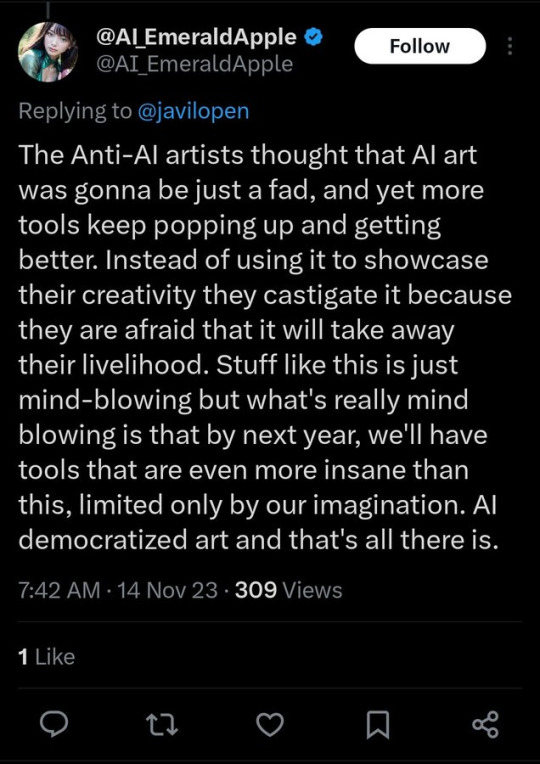
As well as countless of others from the AI generator community. Just talking about how "inaccessible art" is, I decided why not show how wrong these guys are while also helping anyone who actually wants to learn.
Here is the first one ART TEACHERS! There are plenty online and in places like youtube.
📺Here is my list:
Proko (Free, mostly teaches anatomy and how to draw people. But does have art talks and teaches the basics.)
Marc Brunet (Free but he does have other classes for a cheap price. Use to work for Blizzard and teaches you everything)
Aaron Rutten (free, tips about art, talks about art programs and the best products for digital art)
BoroCG (free, teaches a verity of art mediums from 3D modeling to digital painting. As well as some tips that can be used across styles)
Jesse J. Jones (free, talks about animating)
Jesus Conde (free, teaches digital painting and has classes in Spanish)
Mohammed Agbadi (free, he gives some advice in some videos and talks about art)
Ross Draws (free, he does have other classes for a good price. Mostly teaching character designs and simple backgrounds.)
SamDoesArts (free, gives good advice and critiques)
Drawfee Show (free, they do give some good advice and great inspiration)
The Art of Aaron Blaise ( useful tips for digital art and animation. Was an animator for Disney. Mostly nature art)
Bobby Chiu ( useful tips and interviews with artist who are in the industry or making a living as artist)
Sinix Design (has some tips on drawing people)
Winged canvas (art school for free on a verity of mediums)
Bob Ross (just a good time, learn how to paint, as well as how too relax when doing art. "there are no mistakes only happy accidents", this channel also provides tips from another artist)
Scott Christian Sava (Inspiration and provides tips and advice)
Pikat (art advice and critiques)
Drawbox (a suggested cheap online art school, made of a community of artist)
Skillshare (A cheap learning site that has art classes ranging from traditional to digital. As well as Animation and tutorials on art programs. All under one price, in the USA it's around $34 a month)
Human anatomy for artist (not a video or teacher but the site is full of awesome refs to practice and get better at anatomy)
Second part BOOKS, I have collected some books that have helped me and might help others.
📚Here is my list:
The "how to draw manga" series produced by Graphic-sha. These are for manga artist but they give great advice and information.
"Creating characters with personality" by Tom Bancroft. A great book that can help not just people who draw cartoons but also realistic ones. As it helps you with facial ques and how to make a character interesting.
"Albinus on anatomy" by Robert Beverly Hale and Terence Coyle. Great book to help someone learn basic anatomy.
"Artistic Anatomy" by Dr. Paul Richer and Robert Beverly Hale. A good book if you want to go further in-depth with anatomy.
"Directing the story" by Francis Glebas. A good book if you want to Story board or make comics.
"Animal Anatomy for Artists" by Eliot Goldfinger. A good book for if you want to draw animals or creatures.
"Constructive Anatomy: with almost 500 illustrations" by George B. Bridgman. A great book to help you block out shadows in your figures and see them in a more 3 diamantine way.
"Dynamic Anatomy: Revised and expand" by Burne Hogarth. A book that shows how to block out shapes and easily understand what you are looking out. When it comes to human subjects.
"An Atlas of animal anatomy for artist" by W. Ellenberger and H. Dittrich and H. Baum. This is another good one for people who want to draw animals or creatures.
Etherington Brothers, they make books and have a free blog with art tips.
📝As for Supplies, I recommend starting out cheap, buying Pencils and art paper at dollar tree or 5 below. If you want to go fancy Michaels is always a good place for traditional supplies. They also get in some good sales and discounts. For digital art, I recommend not starting with a screen art drawing tablet as they are usually more expensive.
For the Best art Tablet I recommend either Xp-pen, Bamboo or Huion. Some can range from about 40$ to the thousands.
💻As for art programs here is a list of Free to pay.
Clip Studio paint ( you can choose to pay once or sub and get updates. Galaxy, Windows, macOS, iPad, iPhone, Android, or Chromebook device. )
Procreate ( pay once for $9.99 usd, IPAD & IPHONE ONLY)
Blender (for 3D modules/sculpting, animation and more. Free)
PaintTool SAI (pay but has a 31 day free trail)
Krita (Free)
mypaint (free)
FireAlpaca (free)
Aseprite ($19.99 usd but has a free trail, for pixel art Windows & macOS)
Drawpile (free and for if you want to draw with others)
IbisPaint (free, phone app ONLY)
Medibang (free, IPAD, Android and PC)
NOTE: Some of these can work on almost any computer like Clip and Sai but others will require a bit stronger computer like Blender. Please check their sites for if your computer is compatible.
So do with this information as you will but as you can tell there are ways to learn how to become an artist, without breaking the bank. The only thing that might be stopping YOU from using any of these things, is YOU.
I have made time to learn to draw and many artist have too. Either in-between working two jobs or taking care of your family and a job or regular school and chores. YOU just have to take the time or use some time management, it really doesn't take long to practice for like an hour or less. YOU also don't have to do it every day, just once or three times a week is fine.
Hope this was helpful and have a great day.
"also apologies for any spelling or grammar errors, I have Dyslexia and it makes my brain go XP when it comes to speech or writing"
83K notes
·
View notes
Text











Treasure Planet by Francis Glebas #4
#treasure planet#francis glebas#animation#fantasy movies#adventure movies#concept art#character design#artwork
30 notes
·
View notes
Text
Eccezionale a Giugliano: nella Tomba del Cerbero c'è ancora il corpo del "capostipite" con il sudario e gli elementi di corredo
ARCHEOLOGIA | Eccezionale a Giugliano: nella Tomba del Cerbero c'è ancora il corpo del "capostipite" con il sudario e gli elementi di corredo I reperti sono in ottimo stato di conservazione dopo oltre 2.000 anni
Elena Percivaldi Una deposizione in ottimo stato di conservazione di un inumato in posizione supina, coperto da un sudario, probabilmente mineralizzatosi grazie alle particolari condizioni climatiche della camera funeraria, circondato da elementi di corredo, tra cui si segnalano diversi unguentari e strigili. È questa l’ultima, eccezionale scoperta regalata dalle indagini in corso nella Tomba…
#archeologia#CAA (Centro Agricoltura Ambiente “Giorgio Nicoli”)#dna#Francis Crick Insitute#Gennaro Sangiuliano#Giugliano#In evidenza#ipogeo#Liternum#Margarita Gleba#Maria Rosaria Barone Lumaga#Mariano Nuzzo#MiC#Monica Stanzione#Napoli#necropoli#notizie#Pontus Skoglund#SABAP Napoli#Sarah Johnston#scavi#scavi archeologici#scoperte#Silvia Marvelli#Simona Formola#Skoglund Ancient Genomics Laboratory#Soprintendenza per l’Area Metropolitana di Napoli#studi#Thomas Booth#Tomba del Cerbero
0 notes
Photo
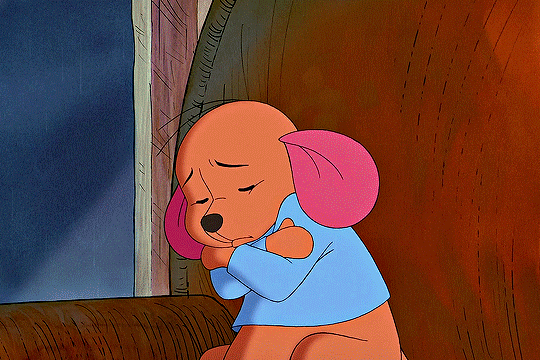
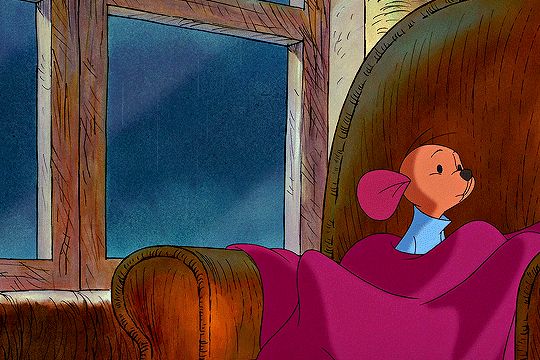



Piglet's Big Movie (2003) dir. Francis Glebas
#disneyedit#Piglet's Big Movie#by mnie#animationsource#dailyanimatedgifs#usereevee#userallisyn#arthurpendragonns#userangelic#usersansa#userkraina#userksena#nessa007#userraffa#userzo#tuserhan#disneydaily#disneynetwork#disneyfeverdaily#fyeahdisney
5K notes
·
View notes
Photo


Storyboards for Dinosaur by Francis Glebas.
3 notes
·
View notes
Text
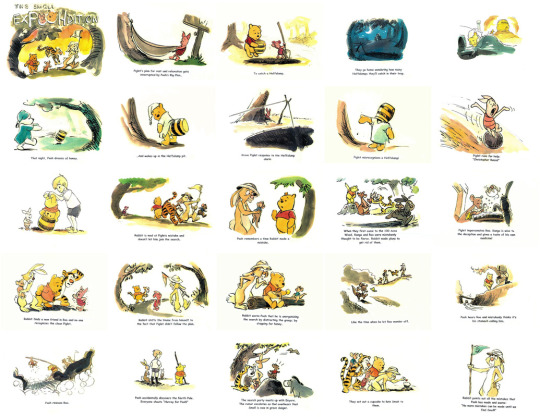

Early beatboards done by director Francis Glebas for Piglet's Big Movie (2003)—which had initially been planned to be more of an anthology film similar to the early Pooh films
#Piglet's Big Movie (2003)#Francis Glebas#beatboards#Piglet#Pooh#Tigger#Rabbit#Christopher Robin#Kanga#Roo#Owl#Eeyore#Small
19 notes
·
View notes